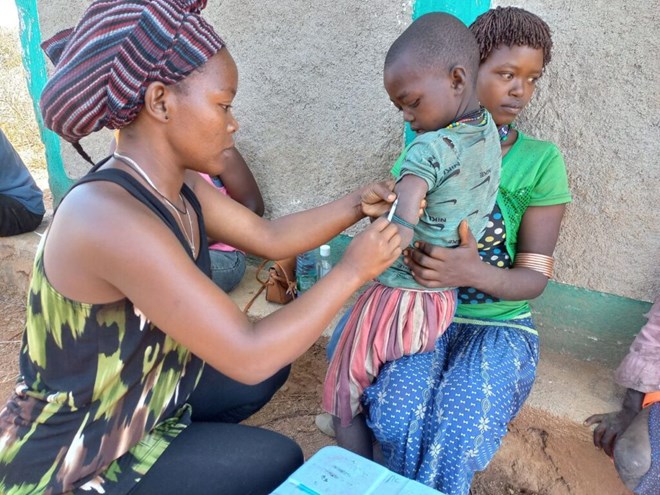Addis Standard
Thursday April 21, 2022

Addis Abeba – A measles vaccination campaign was conducted
in Ethiopia from February to March 2022 in SNNP, Somali and Oromia regions
targeting more than half a million children aged between 6 months to 10 years.
The campaign aimed to stop the spread of a measles outbreak reported from 12
woredas (districts) in three regions: seven woredas of SNNP, one woreda of Guji
Zone in Oromia, and four woredas of Somali putting more than 650,000 children
at risk.
Following the risk assessment and the detailed investigation
report, the national Public Health Emergency Operations Center (EOC) together
with the Expanded Program on Immunization (EPI) Technical Working Group recommended
conducting a non-selective vaccination campaign. As per the recommendation, 21
woredas and one refugee camp in the three affected regions were targeted for
the campaign.
The campaign helped avert a high risk of morbidity and death
in the targeted woredas since the risk of ongoing outbreak was high as the
woredas shared borders and have also been affected by drought
According to preliminary campaign reports, Somali Region
achieved 104% coverage while SNNP and Oromia regions achieved 95% coverage. The
campaign helped avert a high risk of morbidity and death in the targeted
woredas since the risk of ongoing outbreak was high as the woredas shared
borders and have also been affected by drought.
The campaign was coordinated by the Ethiopian Public Health
Institute (EPHI), regional public health emergency management (PHEM) teams, and
zonal and woreda health offices in collaboration with partners such as WHO and
UNICEF.
WHO provided technical, financial and operational support to
the investigation of the outbreak, response plan and vaccination campaign.
Technical support to the campaign included district-level training of
vaccinators and team supervisors. WHO
experts were deployed to monitor and coordinate the campaign, including
ensuring optimized cold-chain system and logistics are in place. They also
guided vaccinators to ensure COVID-19 prevention measures were observed during
the campaign. WHO